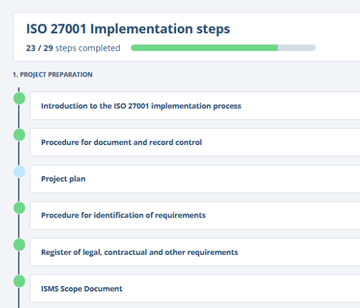Often companies go overboard and create a huge, unmanageable Quality Manual that is basically a re-writing of the ISO 9001 standard with a change from “you shall” to “we will.” While there is some argument that this gives a written example of the company’s commitment to meet each requirement in the standard, such a document tends to be long and not easily read and understood by many employees. In short, it fails the test for simplicity and ease of understanding. Some companies have taken a step toward making the Quality Manual smaller, more graphic, and easier to understand quickly.
What is required in a Quality Manual?
To start, let’s list out what is required from a Quality Manual, and a bit of the reasoning behind each item:
1) The scope of the Quality Management System. This is in place to identify the limit of the system, and is based on the scope agreed with the registrar to be placed on the ISO9001 certificate. This is the explanation of what your company does, be it “Design and Manufacture of Aircraft Electronics,” “Machining Services for Customers in the Automotive Industry,” or “Providing Fast Food for People in the Greater Pensacola Area.”
The second part of the scope requirement is to identify any exclusions from the standard. In many cases the Quality Manual will identify none, but the most common exclusion is the requirement of the ISO 9001 standard for “Design & Development” for companies such as a machining shop, which works exclusively from customer drawings and does not design any products itself.
2) The documented procedures established for the Quality Management System (or references): As is commonly pointed out, there are only six documented procedures required by the ISO9001 standard (Control of Documents, Control of Records, Internal Audit, Control of Non-Conforming Products, Corrective Actions & Preventive Actions). In addition, there is a requirement to create documented procedures when non-conformances would occur if the procedure was not written down. Simply put, if you need to have a written procedure to make sure that mistakes are not made, you need to have a written procedure. If these procedures are simply in flowchart form they could be incorporated into a short Quality Manual, but more than likely they will include some additional information, and most companies will have some additional procedures as well, so references in the Quality Manual are the simplest thing to do. This also gives you a quick place to look when trying to find a procedure.
3) A description of the interaction of processes. This is most simply done with a flowchart that identifies all the processes in the organization with arrows showing how they connect. While an in-depth flowchart may help you to better understand the interactions between processes in your organization, a simple top-level flowchart is all that is needed for most people to understand the basics. This is what is needed in the Quality Manual.
Why a Short Quality Manual?
The best part of a short, graphic Quality Manual is that it makes for a good brochure to explain your company to would-be clients. By removing most of the wordiness in a Quality Manual that comes when you simply re-state the ISO9001 standard, you can include some added extras that help to sell you to people who want to buy your product. You can include Mission and Vision statements along with your Quality Policy and Quality Objectives. If these are worded correctly, you can stress to your clients how you want your company to be of service to them in a clear and concise manner. You can even include a top-level Management Structure so that people can better understand how your company is controlled.
What do you want people to see?
Many companies ask for a Quality Manual when they are first assessing a potential supplier, and this is why making your manual an easy-to-read, informative brochure can be helpful. If the person assessing your manual can easily see that you have everything in place for a successful Quality Management System, then they are more likely to look further into your capabilities and capacity to fulfill their business needs. So when creating your manual, think to yourself, “What do I want customers to see?” Is it a lot of words that will take some time to wade through; or would it be better to give them everything on one easy platter so that they can move on to placing an order?
Click here to see a preview of a Quality Manual that is adapted for a smaller company.


 Mark Hammar
Mark Hammar 




